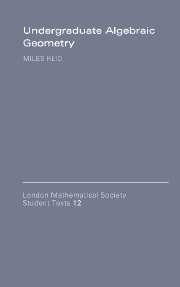

There are several ways of proving this, with varying levels of sophistication. Why these maps are important relies on a commonly stated fact-the plane minus the origin is not affine. Constructible just means a finite union of locally closed (locally closed=intersection of an open and a closed).įor example, take Georges's nice example of the map $\mathbb^2_k\to X$, where $X$ is the affine plane with doubled origin, and the map just embeds in the natural way, choosing one of the origins. The item Algebraic Geometry I: Schemes : With Examples and Exercises, by Ulrich Grtz, Torsten Wedhorn, (electronic resource) represents a specific, individual. If they are unfamiliar to you, most can be done away by assuming we are working in variety land (reduced and separated):ġ) Chevalley's theorem: finite type morphisms between Noetherian schemes send constructible sets to constructible sets. I will include the "correct" (read most general) hypothesis below. Elencwajg, I'll make my comments an answer. Algebraic geometry has its origin in the study of systems of polynomial equations f (x. Smith, K.E, Kahanpää, L, Kekäläinen, P & Traves, W.At the request of Mr.

Student Texts 12, Cambridge University Press (2010) Reid, M., Undergraduate Algebraic Geometry, London Math.Mumford, D., Algebraic Geometry I: Complex Projective Varieties, Classics in Mathematics, reprint of the 1st ed.Harris, J., Algebraic Geometry, A First Course, Graduate Texts in Mathematics 133, Springer-Verlag (1992).G., Introduction to Commutative Algebra, Addison-Wesley, Reading MA (1969) Moreover, we will present many concrete examples, e.g., rational normal curves, Grassmannians, flag and Schubert varieties, surfaces in projective three-space and their lines, Veronese and Segre varieties etc. In the lectures, we will introduce the category of (quasi-projective) varieties, morphisms and rational maps between them, and then proceed to a study of some of the most basic geometric attributes of varieties: dimension, tangent spaces, regular and singular points, degree. Methodically, two contrasting cross-fertilizing aspects have pervaded the subject: one providing formidable abstract machinery and striving for maximum generality, the other experimental and computational, focusing on illuminating examples and forming the concrete geometric backbone of the first aspect, often uncovering fascinating phenomena overlooked from the bird's eye view of the abstract approach. On the other hand, polynomials show remarkable rigidity properties in other situations and can be defined over any ring, and this leads to important arithmetic ramifications of algebraic geometry. This type of equations is ubiquitous in mathematics and much more versatile and flexible than one might as first expect (for example, every compact smooth manifold is diffeomorphic to the zero set of a certain number of real polynomials in R^N). In this talk we will explore some examples showing that Sius theorem. Leads to: The following modules have this module listed as assumed knowledge or useful background:Īlgebraic geometry studies solution sets of polynomial equations by geometric methods. hypersurfaces in projective space are well studied in algebraic geometry. Synergies: The following modules go well together with Algebraic Geometry: Furthermore, the notion of the exterior algebra of a vector space introduced for example in MA3H5 Manifolds is useful background, but will be fully recalled. Useful background: It may be helpful, though not absolutely essential, to be acquainted with basic notions of projective geometry and in particular the concept of projective space from MA243 Geometry. Moreover, Hilbert's Nullstellensatz and primary decomposition will be essential for the foundations.
ALGEBRAIC GEOMETRY EXAMPLES FREE
Assessment: Assignments (15%), 3 hour written exam (85%)Īssumed knowledge: MA3G6 Commutative Algebra: The Module will make free use of the basic concepts of ring and module theory, ideals, prime and maximal ideals, localisation, integral closure. (This has an important complex counterpart - the Picard-Lefschetz theory concerning the branching of integrals.) Other familiar examples include caustics and.


 0 kommentar(er)
0 kommentar(er)
